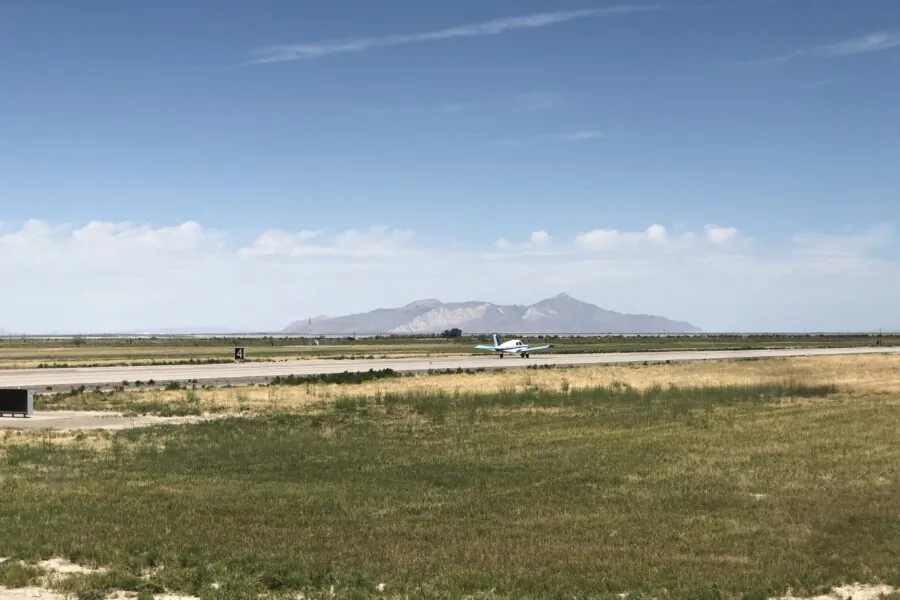Los Angeles World Airports (LAWA) has trusted RS&H to spearhead transformative projects that are shaping the future of the Los Angeles International Airport (LAX), a major international gateway, since 2011. RS&H has been an instrumental partner, offering invaluable engineering and planning expertise to LAX. This dynamic partnership has yielded impressive results, not only in terms of project scale but also in handling a diverse array of tasks simultaneously under aggressive timelines. RS&H’s contributions have ranged from runway and taxiway reconstruction to supporting tenant project approvals and coordinating airside and landside for on-call initiatives.
RS&H has been a pivotal player at LAX, showcasing its prowess in airfield engineering and airport planning services. One of our standout achievements was the design and construction administration for the Runway 7L-25R reconstruction. This encompassed a 6,000-foot concrete keel section passing over the Sepulveda Bridge Tunnel. Alongside, we managed the Taxiway B-17 construction, which featured a new pavement section, drainage, lighting, and meticulously detailed phasing. Understanding LAX’s tight construction timelines, we re-packaged and re-phased the entire project within three months, for work to commence between January to May. This agility was coupled with our robust collaboration with LAWA and multiple stakeholders. By crafting intricate safety and phasing plans, and facilitating the rapid construction of a temporary taxiway for United Airlines, we addressed the challenges of a very busy intersection.
On-call reselection in airport planning
RS&H was reselected in 2015 for a second three-year period to continue to provide on-call planning professional services to LAWA. Our reselection recognized our outstanding performance, capabilities, and resources on the previous LAWA planning on-call assignment ranging from:
- Remain overnight (RON)/remain all day (RAD) parking studies
- Geotechnical and other site investigations
- Airfield engineering design
- Facilities planning services for cargo and ancillary facilities
- Airfield geometry analysis
- Land use compatibility/highest and best use planning
- Advanced planning for environmental and design efforts
- Survey services
Our embedded staff provided support to LAWA’s ongoing capital program and strategic airside planning efforts. RS&H was key in preparing advanced planning documentation for vital airfield infrastructure projects, including the Crossfield Taxiway C14, now designated Taxiway P, Taxiway C extension, and the north airfield exit taxiways.
Planning efforts were completed by our aviation planners in coordination with environmental experts and airfield engineers with future environmental documentation and design needs in mind. RS&H was later selected as the designer for the Crossfield Taxiway P project, providing cross-discipline integration between planning and design for a seamless transition from planning to design and construction. The planning and pre-design work facilitated many subsequent design and construction projects at LAWA’s facilities including Taxiway P, Taxiway C Extension, Runway 6R-24L Improvements, Runway 25R Rehabilitation, and many other projects.
New Crossfield Taxiway P
Our expertise expanded further with the New Crossfield Taxiway P. Our responsibility spanned its planning, design, and construction administration. This new infrastructure was pivotal for the West Bradley Gates, ensuring smooth taxiway flow. But this was not without its challenges. Various tenants and airline operators presented potential roadblocks.
However, through transparent communication and innovative problem-solving, we struck a balance between project goals and stakeholder needs. We managed over twenty distinct project phases with finesse, conducting nighttime work when necessary and ensuring consistent traffic flow to minimize disruptions. When COVID-19 reduced airport traffic, we were tasked with an opportunity. We promptly designed the keel section reconstruction of Taxilane C9, as a change order to an existing construction contract. We went above and beyond by wrapping up the construction ahead of schedule and operating 24/7.
Taxiway C reconstruction and Taxiway D extension west
In addition, our expertise was evident in the Taxiway C reconstruction. This extensive project saw the demolition of existing infrastructure, paving the way for a new 19-inch PCC structural section, enhanced lighting, drainage, and utility systems. We maximized efficiency with double shifts, syncing our pace with the terminal gate closure schedules. Our construction administration services created smoother operations, spanning from on-site observations to strategic construction phasing.
Lastly, following the Taxiway P project, we embarked on the design of the New Taxiway D extension west. The project is now under construction, and we are providing construction phase services. Our forward-thinking approach during design led us to identify forthcoming FAA standard changes. Demonstrating our adaptability and commitment to minimizing stakeholder disruptions, we strategically modified the Taxiway P and Taxiway D intersection to align with the new FAA standard amidst ongoing construction, safeguarding pivotal facilities, including the new FedEx paint facility, from relocation or impact.
As LAX continues to evolve and grow, these transformative projects will undoubtedly leave a lasting impact, further solidifying the airport’s status as a global aviation powerhouse.



